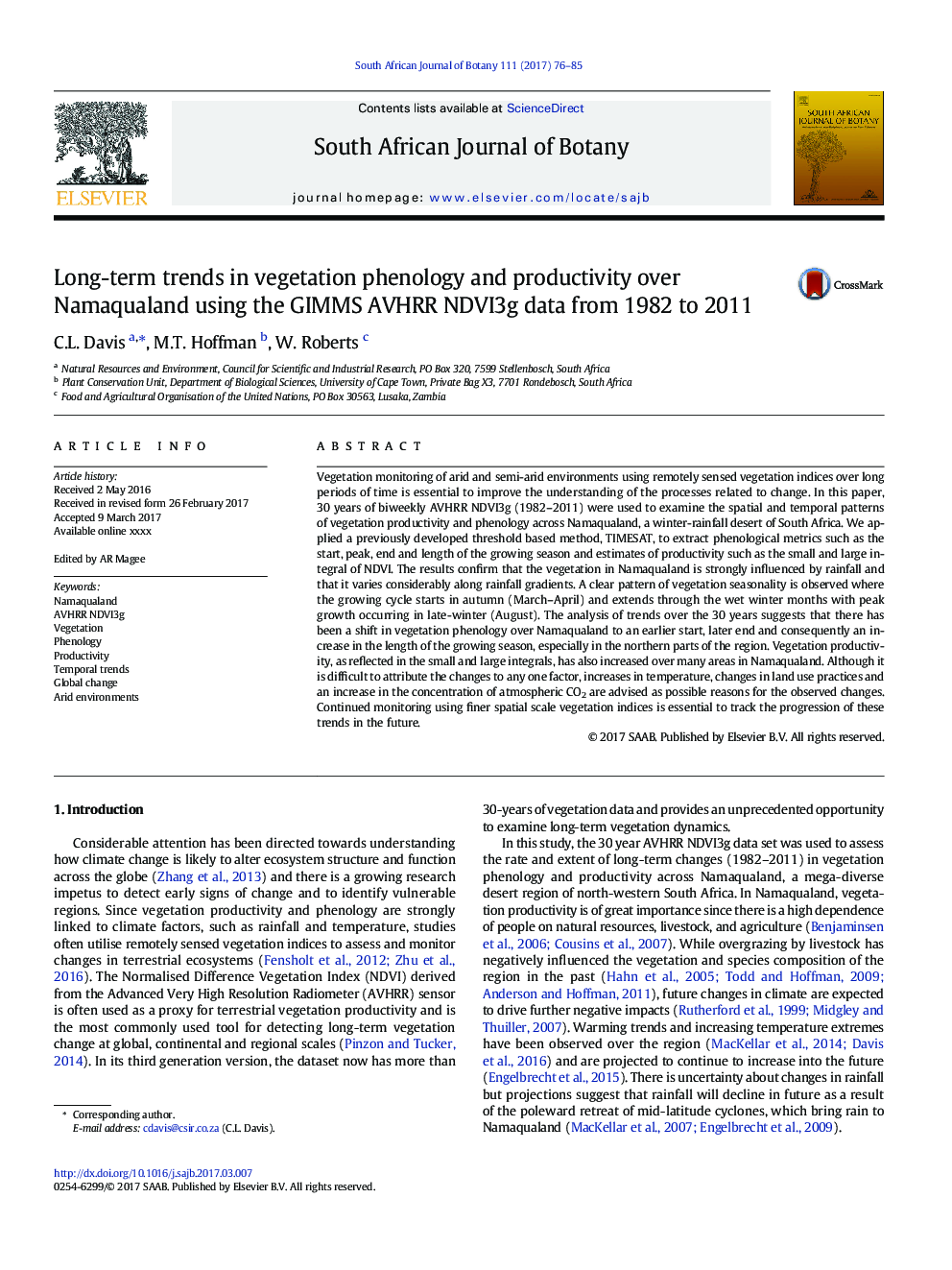| کد مقاله | کد نشریه | سال انتشار | مقاله انگلیسی | نسخه تمام متن |
|---|---|---|---|---|
| 5762949 | 1625147 | 2017 | 10 صفحه PDF | دانلود رایگان |
عنوان انگلیسی مقاله ISI
Long-term trends in vegetation phenology and productivity over Namaqualand using the GIMMS AVHRR NDVI3g data from 1982 to 2011
دانلود مقاله + سفارش ترجمه
دانلود مقاله ISI انگلیسی
رایگان برای ایرانیان
کلمات کلیدی
موضوعات مرتبط
علوم زیستی و بیوفناوری
علوم کشاورزی و بیولوژیک
علوم زراعت و اصلاح نباتات
پیش نمایش صفحه اول مقاله

چکیده انگلیسی
Vegetation monitoring of arid and semi-arid environments using remotely sensed vegetation indices over long periods of time is essential to improve the understanding of the processes related to change. In this paper, 30Â years of biweekly AVHRR NDVI3g (1982-2011) were used to examine the spatial and temporal patterns of vegetation productivity and phenology across Namaqualand, a winter-rainfall desert of South Africa. We applied a previously developed threshold based method, TIMESAT, to extract phenological metrics such as the start, peak, end and length of the growing season and estimates of productivity such as the small and large integral of NDVI. The results confirm that the vegetation in Namaqualand is strongly influenced by rainfall and that it varies considerably along rainfall gradients. A clear pattern of vegetation seasonality is observed where the growing cycle starts in autumn (March-April) and extends through the wet winter months with peak growth occurring in late-winter (August). The analysis of trends over the 30Â years suggests that there has been a shift in vegetation phenology over Namaqualand to an earlier start, later end and consequently an increase in the length of the growing season, especially in the northern parts of the region. Vegetation productivity, as reflected in the small and large integrals, has also increased over many areas in Namaqualand. Although it is difficult to attribute the changes to any one factor, increases in temperature, changes in land use practices and an increase in the concentration of atmospheric CO2 are advised as possible reasons for the observed changes. Continued monitoring using finer spatial scale vegetation indices is essential to track the progression of these trends in the future.
ناشر
Database: Elsevier - ScienceDirect (ساینس دایرکت)
Journal: South African Journal of Botany - Volume 111, July 2017, Pages 76-85
Journal: South African Journal of Botany - Volume 111, July 2017, Pages 76-85
نویسندگان
C.L. Davis, M.T. Hoffman, W. Roberts,